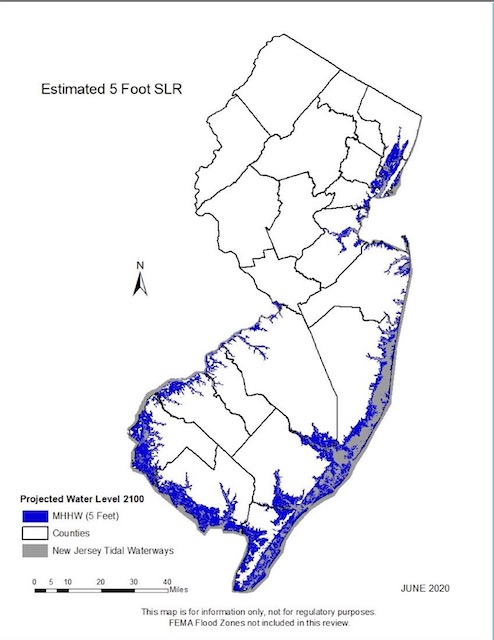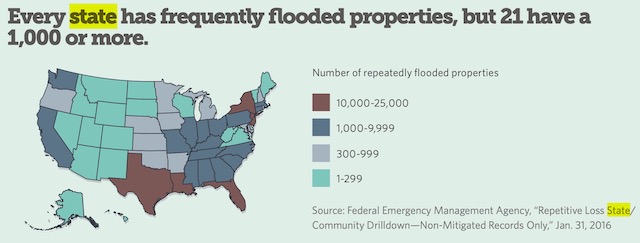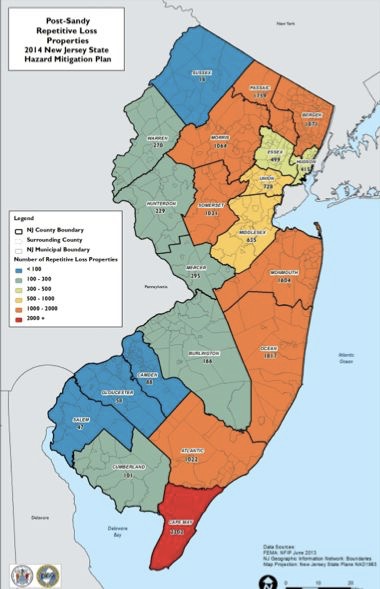NJ Spotlight Repeats – Verbatim – Condi Rice’s “No One Could Have Imagined” 9/11 Lie With Respect To COVID Deaths
No One Could Have Imagined That A Journalist Would Repeat That Infamous Rhetoric
Monumental Failures In High Places – But No Accountability
NJ Spotlight sure started the New Year with a bang.
Check out this astonishing – and false – claim by editor John Mooney:
We have now lost more than 19,000 people in the state due to the virus. No one could have imagined on March 4, when New Jersey reported its first confirmed case, that the number would skyrocket.
“No one could have imagined”?
Are you kidding me?
How could Mr. Mooney – a grown man and professional journalist – so mindlessly parrot that particularly historically ignominious phrase?
That phrase is as toxic as “I am not a crook” and “I did not have sex with that woman”.
Reporters need to stop reading just government press releases and start reading government documents.
In case young readers may not be aware of the origins of that notorious phrase, denying any responsibility for 9/11, President George Bush claimed (NY Times 4/13/04) (emphasis mine)
there was nobody in our government, at least, and I don’t think the prior government that could envision flying airplanes into buildings on such a massive scale.
Bush’s National Security Advisor Condoleezza Rice carved that phrase in stone when she later testified to the 9/11 Commission: (excerpt from the transcript of Rice’s testimony to the 9/11 Commission)
[Gov.] KEAN: I’ve got a question now I’d like to ask you. It was given to me by a number of members of the families.
Did you ever see or hear from the FBI, from the CIA, from any other intelligence agency, any memos or discussions or anything else between the time you got into office and 9/11 that talked about using planes as bombs?
RICE: Let me address this question because it has been on the table. […]
And I said, at one point, that this was a historical memo, that it was — it was not based on new threat information. And I said, “No one could have imagined them taking a plane, slamming it into the Pentagon” — I’m paraphrasing now — “into the World Trade Center, using planes as a missile.”
Those claims by Bush and Rice were blatantly false.
The Joint Inquiry of 2002 confirmed that the Intelligence Community had received at least twelve reports over a seven-year period suggesting that terrorists might use planes as weapons.
NY Times columnist Maureen Dowd further debunked them with additional evidence from FBI sworn testimony: (3/22/06 NYT column)
Even though Condi Rice told the 9/11 commission that “no one could have imagined” terrorists’ slamming a plane into the World Trade Center, an F.B.I. officer did. Officer Samit testified that a colleague, Greg Jones, tried to light a fire under Mr. Maltbie by urging him to “prevent Zacarias Moussaoui from flying a plane into the World Trade Center.”
So, that phrase, “no one could have imagined” will live in infamy and should obviously be radioactive, especially to an experienced professional journalist, whose craft is language.
According to Wiki, the concept of a failure of imagination is “a circumstance wherein something seemingly predictable (particularly from hindsight) and undesirable was not planned for.[1]“
But, what we have in this case is actually far worse than a “failure of imagination” because the event in question was not only predictable and predicted, it was planned for.
Let me repeat: the event was not only predicted it was planned for by NJ State officials.
The event I’m referring to is the COVID pandemic and the number of deaths predicted.
Citing 19,000 current COVID deaths, Mr. Mooney claims that “no one could have imagined” that “the number would skyrocket” when the virus was first detected back in March 2020.
That is as big a lie as Bush and Rice’s.
As I wrote on March 17, 2020, NJ has two Pandemic Plans adopted pursuant to NJ law.
Those plans found that pandemics are “inevitable” and predicted potential fatalities from 5,000 (NJ DoH) to 50,000 (NJ Hazard Mitigation plan), including the collapse of the health care system and social disorder.
Thus spake the NJ Department of Health’s Pandemic Influenza Plan:
The Looming Threat:
History tells us that Influenza pandemics are inevitable but unpredictable and arrive with very little warning. Should an influenza pandemic virus again appear that behaves as the 1918 strain, the results could be catastrophic, even when taking into account the remarkable advances in medicine. Air travel could hasten the spread of a new virus, and decrease the time available for implementing interventions. Outbreaks would most likely occur simultaneously throughout much of the U.S., preventing shifts in human and material resources that usually occur in response to other disasters. The effect of influenza on individual communities will be relatively prolonged (weeks to months) in comparison to other types of disasters. Healthcare systems could be rapidly overburdened, economies strained, and social order disrupted. […]
If a severe (1918-like) pandemic hits NJ, the impact on the healthcare system and the number of deaths is estimated as follows:
Deaths 5,000 (2% of ill)
The NJ Hazard Mitigation Plan’s Pandemic Chapter estimates 10 TIMES more deaths:
Three major influenza pandemics affected areas across the globe in the 20th century, causing millions of deaths. New Jersey saw the impacts of these pandemics. If a new influenza virus were to begin spreading throughout the world, New Jersey could experience more than 50,000 deaths, more than 275,000 people hospitalized, and more than 2.5 million people ill (NJDOH, 2012). Table 5.21-3 provides details on pandemic events that have impacted New Jersey.
And that’s from 5,000 to 50,000 deaths from a flu pandemic. In contrast, COVID is at least 10 times and up to 100 times more deadly than flu.
But you don’t have to accept my opinion at face value about how grossly incompetent and mismanaged the response by NJ State officials was.
You can read this excellent analysis by Jeffrey Frankel, Harpel Professor at Harvard’s Kennedy School of Government, and formerly a member of the White House Council of Economic Advisers. A shorter version appeared in Project Syndicate: (emphases mine)
Events like the COVID-19 pandemic of 2020, the US housing crash of 2007-09, and the terrorist attack of September 11, 2001, can be called “black swans”: in each case, few people were able to predict them reliably. But they were known unknowns, not unknown unknowns. That is, in each case, knowledgeable analysts were fully aware that such a thing could happen, even that it was likely to happen eventually. They could not predict that the event would happen with high probability in any given year. But the consequences of each of these events were severe, and predictably so. Thus, policymakers should have listened to the warnings and should have taken steps in advance. They could have helped avert or mitigate disaster if they had done so.
Listen to the Cassandras
After the danger of the new coronavirus had become apparent to all, US President Donald Trump repeatedly said that such a pandemic was “an unforeseen problem” that “nobody ever thought would be a problem.” But of course epidemiology experts had warned about the danger for years, and as recently as last October.
So, I guess you could say that NJ Spotlight engaged in Trumpian lies!
As far as I know, no press or public official have held State officials accountable for their monumental failures.
I contacted Mr. Mooney, Mr. McAlpin and two reporters at NJ Spotlight today demanding that they correct this egregious and unforgivable factual error.
We’ll let you know how they respond.


